Longmen Grottoes
 From Nwe
From Nwe Coordinates:
| Longmen Grottoes* | |
|---|---|
| UNESCO World Heritage Site | |
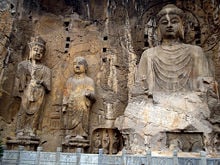 |
|
| State Party | |
| Type | Cultural |
| Criteria | i, ii, iii |
| Reference | 1003 |
| Region** | Asia-Pacific |
| Inscription history | |
| Inscription | 2000 (24th Session) |
| * Name as inscribed on World Heritage List. ** Region as classified by UNESCO. |
|
The Longmen Grottoes (ch. 龍門石窟/ 龙门石窟, lóngmén shíkū; lit. Dragon's Gate Grottoes) or Longmen Caves are located 12 kilometers (7.5 mi) south of present day Luoyang in Henan province, China. The grottoes, depicting Buddhist subjects, densely dot two mountains: Xiangshan (to the east) and Longmenshan (to the west). The Yi River flows northward between them. For that reason, the area had been called Yique (The Gate of the Yi River). From north to south, the distance covered by grottoes is about one kilometer. Along with the Mogao Caves and Yungang Grottoes, the Longmen Grottoes is one of the three most famous ancient sculptural sites in China.
The construction of the Longmen Grottoes began in 493 C.E. and continued construction into the last dynasty, the Qing (1644–1912). More than 2,000 caves, nearly 3,000 inscriptions, more than forty pagodas and 100,000 images were created during the Tang dynasty (618–907) with the majority of the remainder created earlier during the Northern Wei Dynasty (386-535). The Longmen Grottoes reveal the profound impact that Buddhism has had in the eastern part of China. UNESCO designated Longmen Grottoes a World Heritage Site in 2000. The area was inscribed on the UNESCO World Heritage List in November 2000.
Description
Longmen Caves has 2345 caves and niches, 2800 inscriptions, forty three pagodas, and over 100,000 Buddhist images.[1] Thirty percent of the caves date from the Northern Wei Dynasty, sixty percent from the Tang Dynasty, and caves from other periods less than ten percent. The most impressive collection of Chinese art from those dynasties, dating from 316 to 907 C.E. They represent the zenith of stone carving in China.
During the Warring States Period, the general Bai Qi of Qin (state) once defeated the allied forces of Han (state) and Wei (state) at the site.[2] Construction of the grottoes began in 493 C.E. According to UNESCO's citation designating the Longmen Grottoes a World Heritage Site, they are an illustration of "…the perfection of a long-established art form which was to play a highly significant role in the cultural evolution of this region of Asia."[3]
Individual Grottoes
Northern Wei
Middle Binyang Cave
Middle Binyang Cave (ch. 宾阳中洞) is cave number 140, 12 meters long, 10.9 meters wide, 9.3 meters high. Constructed by order of Emperor Xuanwu of the Northern Wei in honor of his parents Emperor Xiaowen and Empress Wenzhao, the cave was supposed to imitate Lingyansi Cave at the Yungang Caves.[4] Work began in 500 and was completed in 523. In 1987, a brick-entrance was demolished to reveal two new figures: A four-headed, four-armed Brahma and a one headed, four armed Śakra devendra.
The back wall is a carved Sakyamuni, with two discliples and two bodhisattvas. The main Buddha and Bodhisattva represent the Northern Wei sculptural style. A lotus-flower pool decorates the floor. The ceiling is engraved with a blossoming lotus flower, eight musical apsarases, two attending apsarases and tassel and drapery patterns. A large Vimalakirti relief, the Prince Sattva jataka, the Prince Sudatta jataka, an emperor/empress worshiping scene and ten deity kings cover the front wall. North and South Binyang Caves flank the cave.
Other Northern Wei grottoes
- Guyang Cave
- Lotus-flower Cave
- Weizi Cave
- Huangfugong Cave
Sui
South Binyang Cave
South Binyang Cave (ch. 宾阳南洞) is cave number 159 at the Longmen Grottoes. Emperor Xuanwu of the Northern Wei also ordered the construction of this cave in honor of his parents Emperor Xiaowen and Empress Wenzhao at the same time as the North Binyang Cave. The cave was finally completed during the Sui.[5]
The main image is an Amitabha, said to represent the transition of solemn and majestic Northern Wei sculpture into the more life-like style of the Tang. Numerous sculptures have been carved into the cave walls including Bodhisattvas. Middle Binyang Cave and North Binyang Cave are adjacent to the north.
Tang
Hidden Stream Temple Cave
The Hidden Stream Temple Cave (ch. 潜溪寺洞; qián xī sì dòng, also zhai fu tang) is cave number 20. The cave had wooden structured eaves added during the Qing Dynasty, but they deteriorated with time and have not been replaced. In 1990, an outer room imitating the Tang style was rebuilt and the floor paved with bricks.
The central statue is a large Amitabha seated on a square pedestal with loose clothes, a naked chest, and a plump face. His hands take the abhaya mudra, symbolizing fearlessness. The Bodhisattvas Avalokitesvara and Mahasthamaprapta stand to each side. Two armored heavenly kings protect the entrance. Two engraved buddhas in a niche on the southern wall outside the cave stand at the entrance.
North Binyang Cave
North Binyang Cave (ch. 宾阳北洞) is cave number 104 at the Longmen Grottoes. As with the South Binyang Cave and Middle Binyang Cave, Emperor Xuanwu of the Northern Wei had the cave built in honor of his parents Emperor Xiaowen and Empress Wenzhao.[6] It also was not completed until the Tang Dynasty. The main image is an Amitabha with a patterned halo. Dragon-head shaped column bases dating from the Northern Wei flank the cave entrance. Other figures are also present (possibly Bodhisattvas). Middle Binyang Cave and South Binyang Cav] are adjacent to the south.
Other cave sites
- Fengxiansi
- 10,000 Buddha Cave
- Kanjingsi
- Dawanwufo Cave
The Longmen area is open to the public, and although the grottoes cannot be entered most of the artwork can be seen from the exterior.
See also
- Chinese Buddhism
- Buddhist Art
- Mogao Caves
Notes
- ↑ Jo Allum, Sharon Leece, Christine Meaney, and Vivien Jones, Legends of the Dragon: Celebrating Asia's Historic Splendour (Hong Kong: PPP Co., 2006), 63.
- ↑ Jinglong Liu, Longmen Shiku zao xiang quan ji = Complete Works of Statues in Longmen Grottoes (Beijing: Wen wu chu ban she, 2002), 10.
- ↑ UNESCO, Longmen Grottoes. Retrieved October 2, 2008.
- ↑ Xingyun, Illustrated World Buddhist Arts (Taiwan: Fo Guang Shan Foundation for Culture and Education, 2004), 303.
- ↑ David Leffman, Simon Lewis, and Jeremy Atiyah, The Rough Guide to China (London: Rough Guides, 2003), 405.
- ↑ Atlas of World Heritage: China (San Francisco, CA: Long River Press, 2005), 82.
References
ISBN links support NWE through referral fees
- Allum, Jo, Sharon Leece, Christine Meaney, and Vivien Jones. 2006. Legends of the Dragon: Celebrating Asia's Historic Splendour. Hong Kong: PPP Co. ISBN 9789889889968.
- Atlas of World Heritage: China. 2005. San Francisco, CA: Long River Press. ISBN 9781592650606.
- Leffman, David, Simon Lewis, and Jeremy Atiyah. 2003. The Rough Guide to China. London: Rough Guides. ISBN 9781843530190.
- Liu, Jinglong. 2002. Longmen Shiku zao xiang quan ji = Complete Works of Statues in Longmen Grottoes. Beijing: Wen wu chu ban she. ISBN 9787501013838.
- Xingyun. 2004. Illustrated World Buddhist Arts. Taiwan, R.O.C.: Fo Guang Shan Foundation for Culture and Education. OCLC 224330745.
External Links
All links retrieved November 3, 2022.
- UNESCO Longmen Grottoes.
- Travel Guide China: Longman Grottoes.
- Pictures: Longmen Grottoes, Luoyang, Henan, China.
- YouTube: Longmen Grottoes—Luoyang, CHINA.
|
|||||||
Credits
New World Encyclopedia writers and editors rewrote and completed the Wikipedia article in accordance with New World Encyclopedia standards. This article abides by terms of the Creative Commons CC-by-sa 3.0 License (CC-by-sa), which may be used and disseminated with proper attribution. Credit is due under the terms of this license that can reference both the New World Encyclopedia contributors and the selfless volunteer contributors of the Wikimedia Foundation. To cite this article click here for a list of acceptable citing formats.The history of earlier contributions by wikipedians is accessible to researchers here:
- Longmen_Grottoes history
- Middle_Binyang_Cave history
- South_Binyang_Cave history
- Hidden_Stream_Temple_Cave history
The history of this article since it was imported to New World Encyclopedia:
Note: Some restrictions may apply to use of individual images which are separately licensed.
↧ Download as ZWI file | Last modified: 02/04/2023 06:57:46 | 6 views
☰ Source: https://www.newworldencyclopedia.org/entry/Longmen_Grottoes | License: CC BY-SA 3.0
 ZWI signed:
ZWI signed: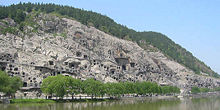




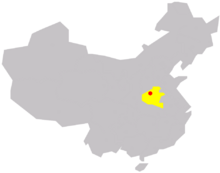



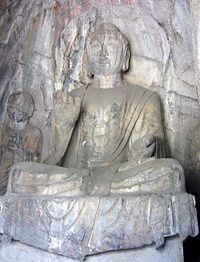
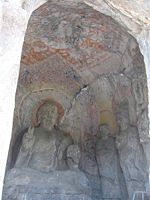

 KSF
KSF